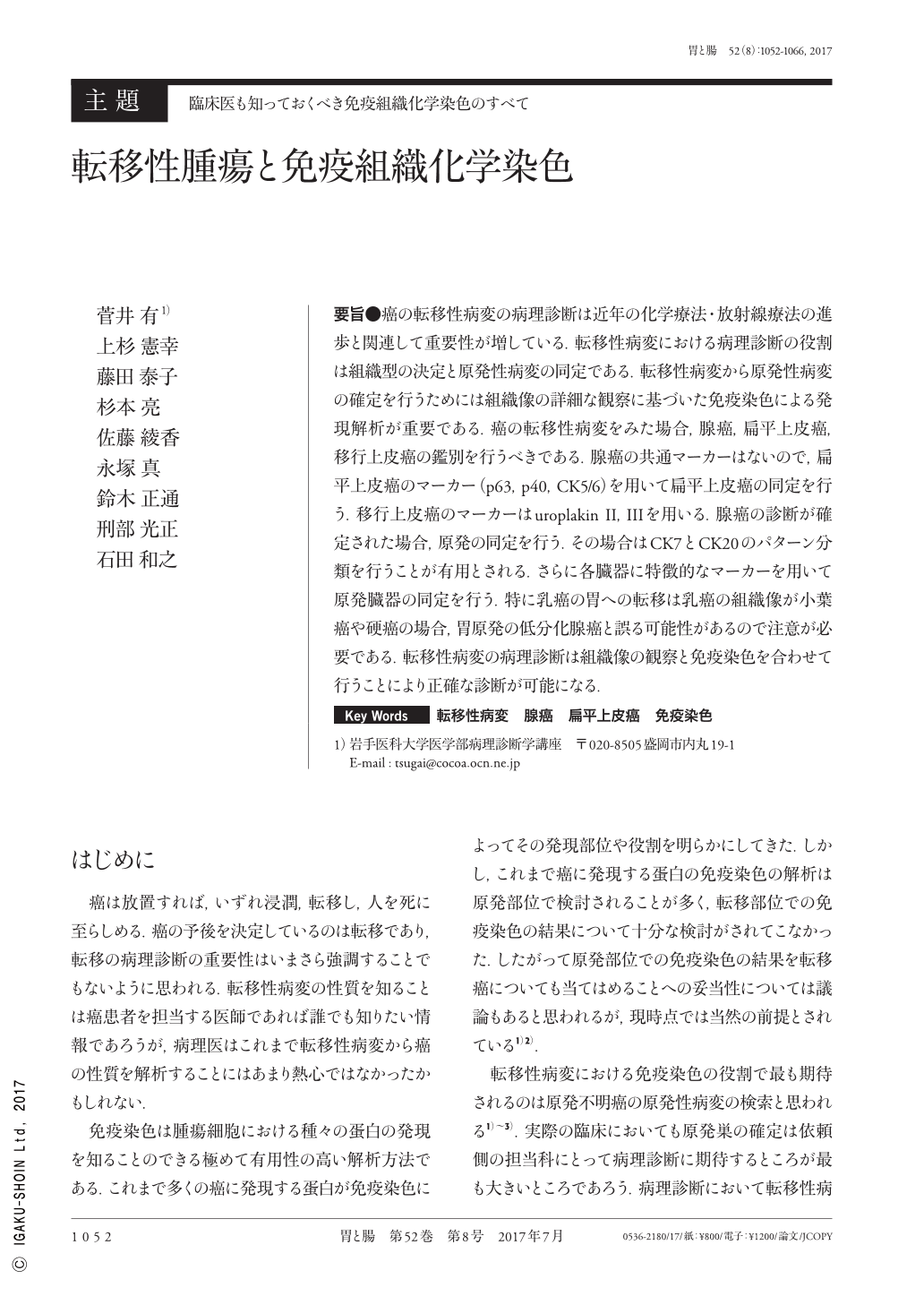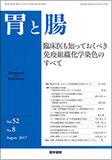Japanese
English
- 有料閲覧
- Abstract 文献概要
- 1ページ目 Look Inside
- 参考文献 Reference
- サイト内被引用 Cited by
要旨●癌の転移性病変の病理診断は近年の化学療法・放射線療法の進歩と関連して重要性が増している.転移性病変における病理診断の役割は組織型の決定と原発性病変の同定である.転移性病変から原発性病変の確定を行うためには組織像の詳細な観察に基づいた免疫染色による発現解析が重要である.癌の転移性病変をみた場合,腺癌,扁平上皮癌,移行上皮癌の鑑別を行うべきである.腺癌の共通マーカーはないので,扁平上皮癌のマーカー(p63,p40,CK5/6)を用いて扁平上皮癌の同定を行う.移行上皮癌のマーカーはuroplakin II,IIIを用いる.腺癌の診断が確定された場合,原発の同定を行う.その場合はCK7とCK20のパターン分類を行うことが有用とされる.さらに各臓器に特徴的なマーカーを用いて原発臓器の同定を行う.特に乳癌の胃への転移は乳癌の組織像が小葉癌や硬癌の場合,胃原発の低分化腺癌と誤る可能性があるので注意が必要である.転移性病変の病理診断は組織像の観察と免疫染色を合わせて行うことにより正確な診断が可能になる.
Pathologists use various panels of IHC(immunohistochemical)stains to identify the original site for metastatic cancer, particularly for cancers of unknown origin. The role of pathological diagnosis for metastatic lesion is to determine histological diagnosis and confirm the primary lesion. IHC analysis should confirm the primary origin, which corresponds to the metastatic lesion. We aimed to summarize the use of currently available IHC markers for evaluating metastatic tumors. IHC analysis is an important pathological technique for evaluating metastatic tumors and should be used for routine histopathological diagnosis and clinical information. While a single marker may be used to support a known or suspected origin site, a carefully constructed panel is strongly recommended, particularly for tumors of morphologically uncertain lineage or origin.

Copyright © 2017, Igaku-Shoin Ltd. All rights reserved.


